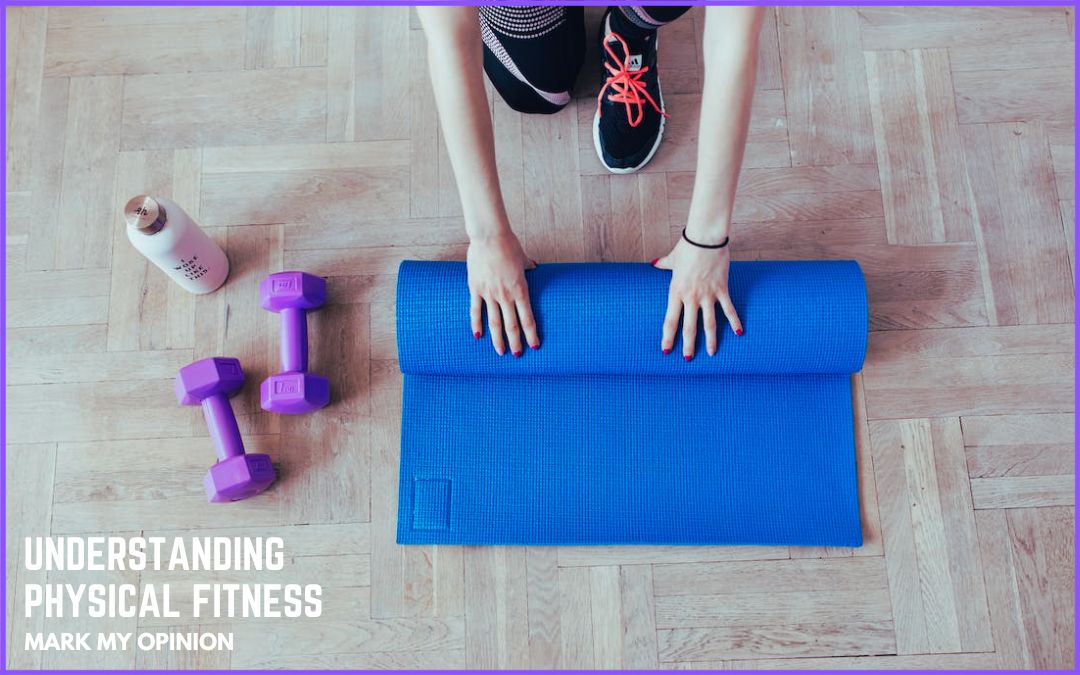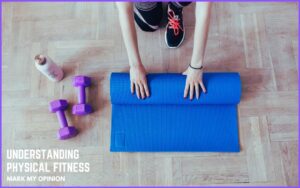Hello and welcome to our health and fitness blog! This website is for everyone who wants to enhance their health and well-being, regardless of whether or not they exercise. Physical fitness is vital for living a healthy life and performing well in the body. We’ll talk about strength and cardiorespiratory fitness today. The impacts of fitness on body systems will also be examined. We’ll talk about how to test and rate your fitness levels, as well as the advantages of physical fitness for performance and endurance. Find out what physical fitness entails right here!
The Components of Physical Fitness: Cardiorespiratory Performance and Strength
Fitness and health improvement necessitate an understanding of the components of physical fitness. The five fitness components can be combined to form a well-rounded workout routine.
Aerobic fitness (heart and lung endurance) is essential. This implies that the heart, lungs, arteries, vessels, and veins are all working properly to provide oxygen to cells. Regular cardiovascular and lung-duty activities will improve your cardiovascular endurance.
Improving cardiovascular endurance has numerous advantages. It improves the body’s ability to produce and absorb oxygen, accelerates cell metabolism, and makes daily life easier. Every year, many people are killed by cardiovascular disease, despite the fact that regular exercise can reduce the risk.
A variety of exercises can increase cardiovascular fitness and heart health. Walking, jogging, biking, swimming, dancing, circuit training, and boxing are just a few examples. These can increase your health and cardiovascular fitness as part of your training.
The (ACSM) recommends 150 minutes of moderate-intensity or 75 minutes of intense activity each week to improve cardiovascular health. Prioritizing cardiovascular fitness and regular exercise can improve your health and lower your risk of developing numerous diseases.
Fitness requires both strength training and cardiovascular endurance. It refers to how well your muscles withstand pressure. Strength training helps to develop muscle and extends life. Strength exercise builds muscle, strengthens bones, raises metabolism, and improves daily activities. It can also aid in weight loss and the prevention of osteoporosis.
Strength and cardiovascular endurance training are both necessary for peak fitness. Taking care of these two items can improve your health, burn more calories, and make it easier to complete various jobs without becoming fatigued.
The Importance of Physical Fitness for Overall Health and Well-being
Fitness is essential for overall health. Physical exercises ranging from mild to intensive are featured. Regular physical activity can help to prevent and treat noncommunicable diseases such as cancer, heart disease, diabetes, and stroke. It lowers blood pressure, keeps you at a healthy weight, and enhances your mental, physical, and overall health.
The WHO suggests how much physical exercise is best for each age group. Children under the age of five should play with others several times every day. It is not appropriate to keep them for more than an hour. Children aged 1-2 should be physically active for 180 minutes every day, participating in sports and other activities.
Everyone, regardless of ability level, can benefit from exercise. Walking, horseback riding, sports, and play are all popular pastimes. These tasks are enjoyable for people of all ages, regardless of their skill level. Everyone benefits from physical activity, whether they walk or participate in a major sport. Sleep, like fitness, is essential for health and well-being, especially in youngsters. Sleeping well supports general wellness.
Understanding the Relationship Between Physical Fitness and Efficiency in Body Systems
Daily exercise benefits your heart, which is great. Running, swimming, and cycling are good for your heart and blood vessels. This promotes circulation and helps oxygen and nutrients reach cells, improving physiological function.
Physical fitness helps maintain strong bones and muscles. Strength training increases muscle strength and endurance. This improves body function and reduces injury risk. Strong muscles and bones let people stand and move, making daily duties easier and faster.
Fitness also improves breathing. Regular exercise expands your lungs and enhances oxygen intake. This optimizes oxygen usage during exercise. People can accomplish things longer without tiring because they breathe more oxygen. This boosts energy and endurance.
Fitness helps these things and boosts metabolism. Regular exercise regulates metabolism, improving digestion and food absorption. This helps maintain weight and energy. Fitness also boosts the immune system, reducing illness and increasing health. Regular exercise boosts the immune system, reducing the risk of short- and long-term illnesses.
Remember that fitness and body system effectiveness are related. Changes to one system typically improve others. A well-rounded fitness program includes aerobic, strength, flexibility, and balance training to improve various body systems.
Consult a doctor or trainer to create a customized fitness regimen. They can advise you on workouts and intensity to improve your health and performance.
How to Measure and Assess Physical Fitness Levels
Physical fitness can be measured and assessed in a variety of ways and with a variety of equipment. When assessing these metrics, keep their feasibility and accuracy in mind.
Large-scale studies rarely use highly valid metrics because they are costly or difficult to implement. Measures that are simple to implement may not be as effective. Accuracy and utility are delicate concepts.
To facilitate comparisons, these measurements are usually classified as report-based, monitoring-based, or criteria-based. Each category has advantages and disadvantages; thus, choose the optimal measure based on the assessment’s objectives.
Keep in mind that energy expenditure does not reveal everything about exercise. Strength, flexibility, and habits should also be considered. More investigation is required to define the range of valid behavior and activity metrics.
The Benefits of Physical Fitness for Optimal Performance and Endurance
Regular exercise is required to maintain your strength and endurance. There are numerous health and fitness advantages. Brisk walking, jogging, swimming, and biking are all endurance exercises that increase heart health and fitness. By raising respiration and heart rate, these items benefit your heart, lungs, and circulation.
Strength training, on the other hand, strengthens muscles. Strength training with weights and resistance bands can help tone and build muscle. Muscle strength improves physical performance and facilitates daily duties.
Balance exercises help you stay upright and prevent falls. Balance and coordination are improved by Tai Chi and one-legged standing. This makes difficult terrain easier to navigate and lowers the chance of harm.
Yoga and stretching are critical for improving flexibility and range of motion. These exercises help to prevent muscle tightness and promote flexibility. This streamlines physical activities while reducing muscle strain and injuries.
Starting slowly and dividing exercise time will help you incorporate regular exercise into your busy schedule. Even five minutes of exercise is beneficial. People can achieve the necessary amount of exercise for their age and health by progressively increasing the length and intensity of their workouts.
To Wrap Things Up
Fitness is essential for good health and pleasure. People can increase their fitness and body systems by studying cardiorespiratory function and strength. People can analyze their progress and alter their workouts with regular fitness tests. Fitness improves ability and endurance in a variety of activities in addition to making you look and feel beautiful. Exercise should be a part of your daily routine, whether you’re a fitness fanatic or just trying to get healthier. Begin exercising right away for a healthier, more functional body.



